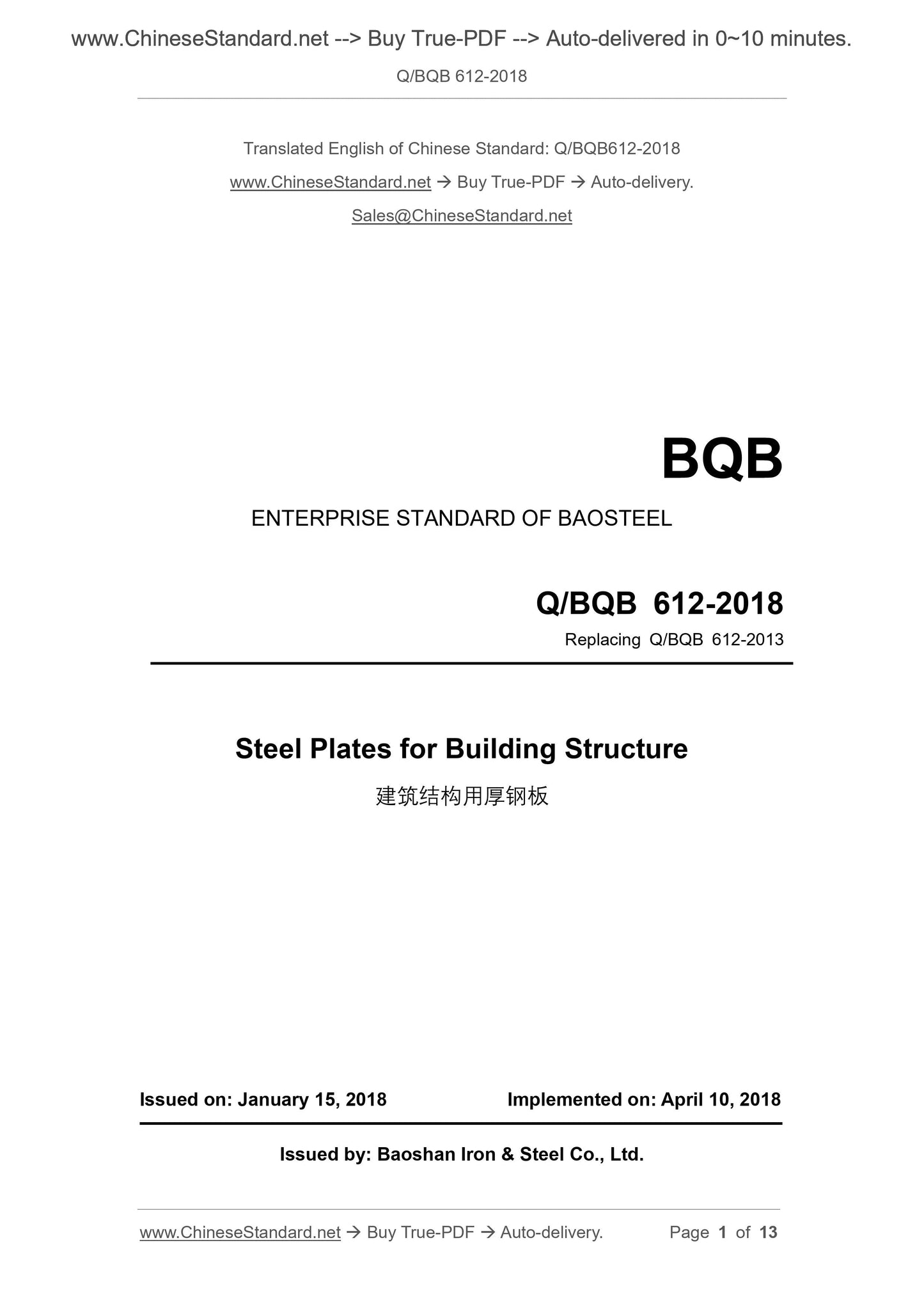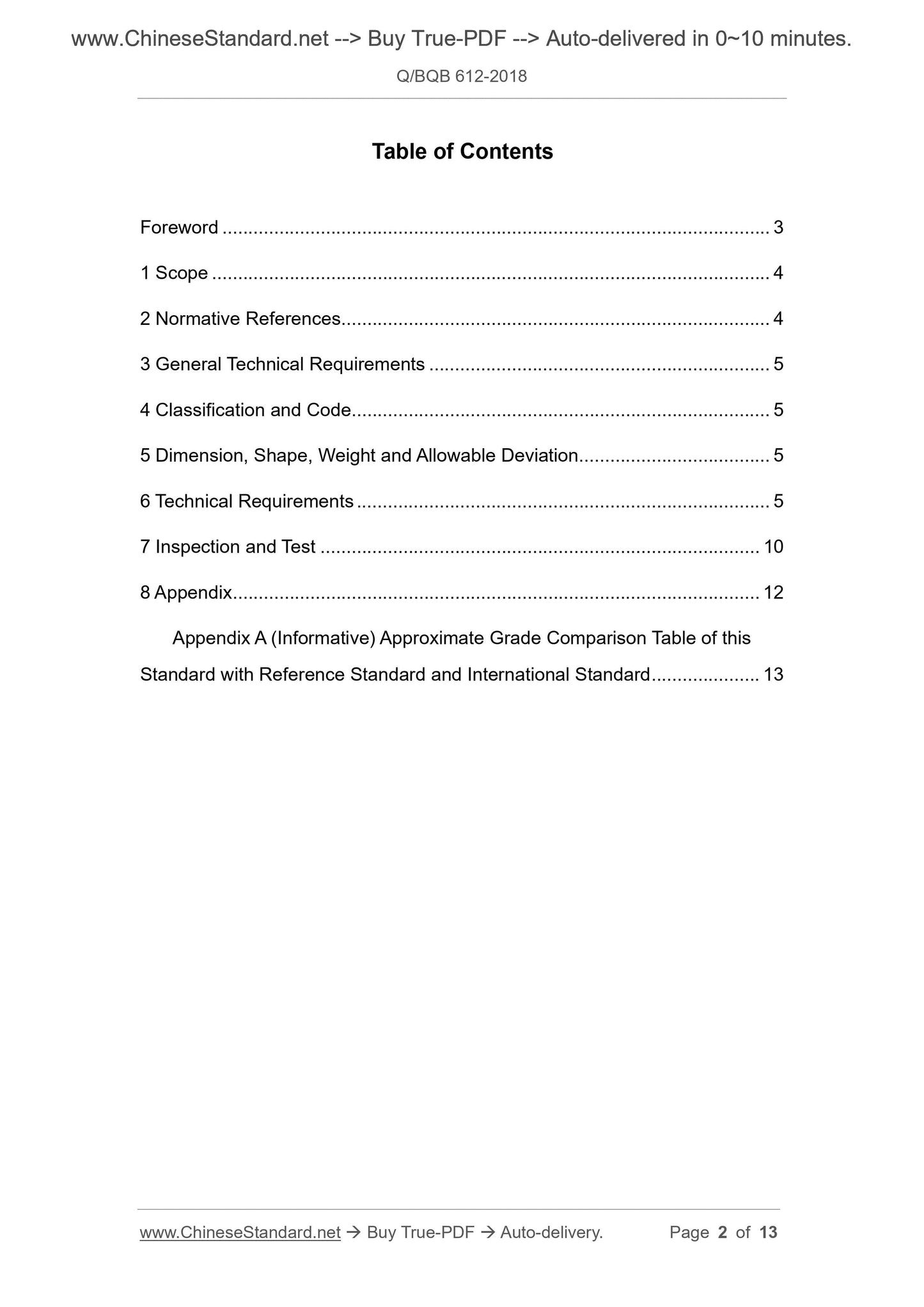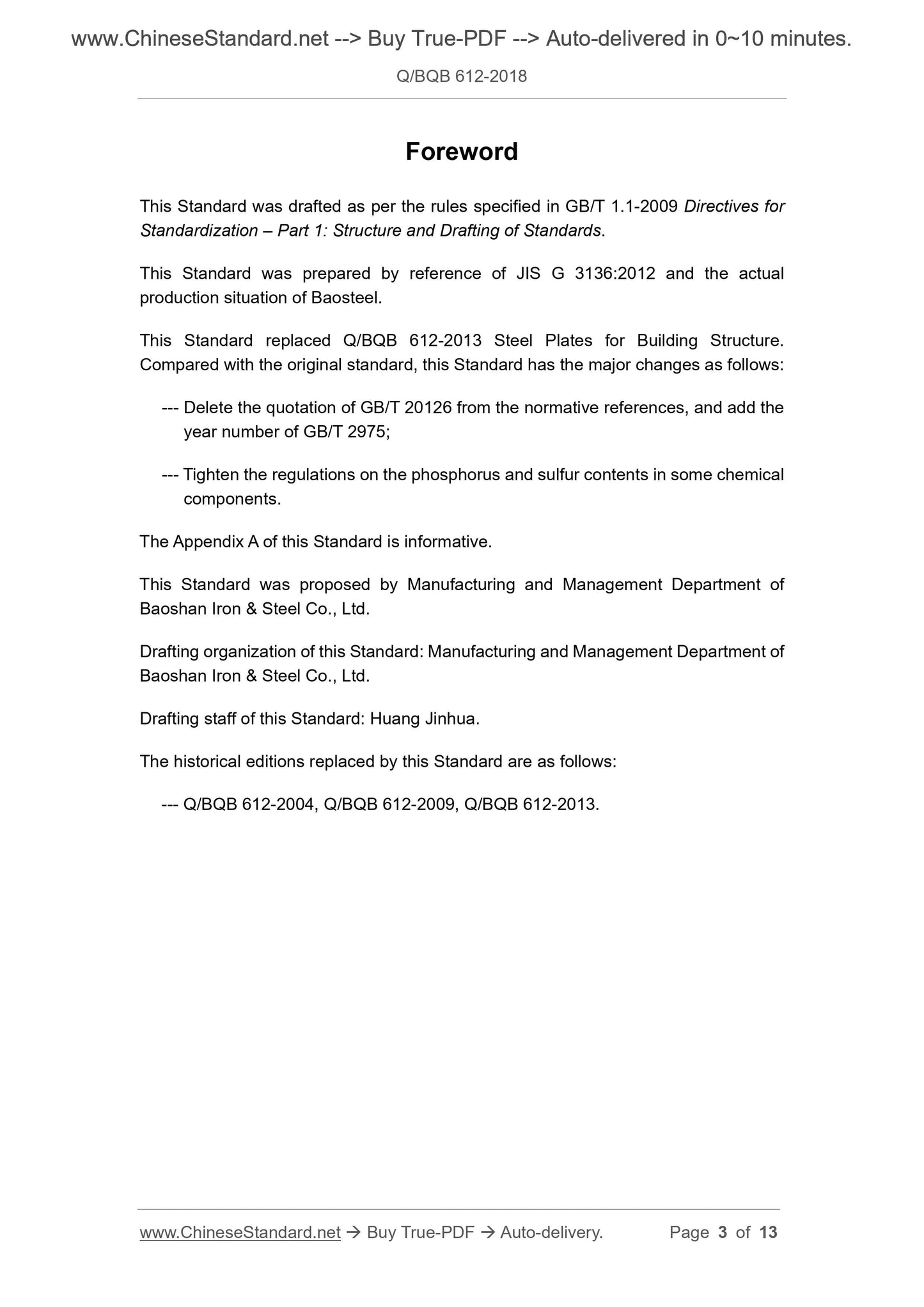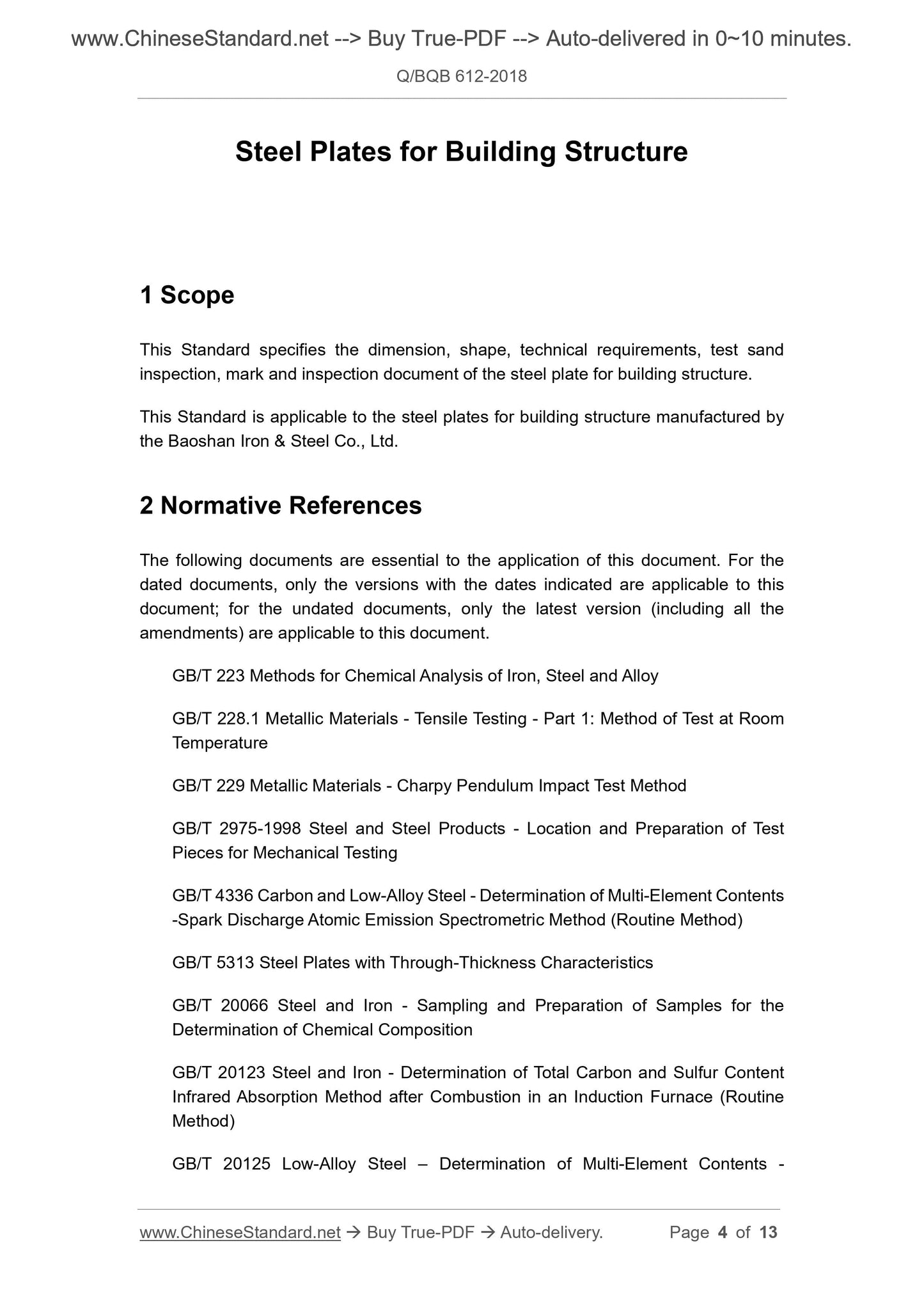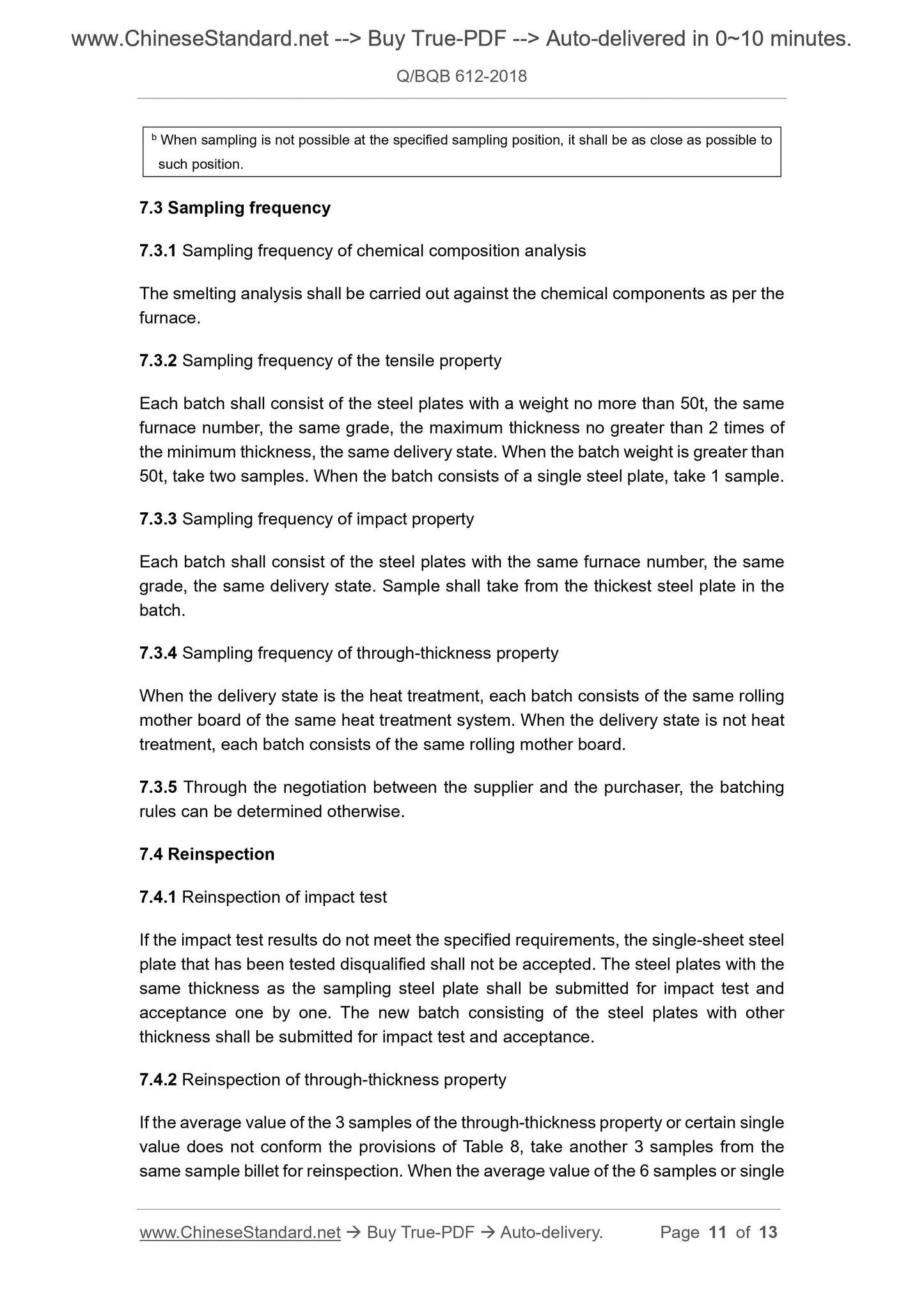1
/
of
5
www.ChineseStandard.us -- Field Test Asia Pte. Ltd.
Q/BQB 612-2018 English PDF (Q/BQB612-2018)
Q/BQB 612-2018 English PDF (Q/BQB612-2018)
Regular price
$255.00
Regular price
Sale price
$255.00
Unit price
/
per
Shipping calculated at checkout.
Couldn't load pickup availability
Q/BQB 612-2018: Steel plates for building structure
Delivery: 9 seconds. Download (and Email) true-PDF + Invoice.Get Quotation: Click Q/BQB 612-2018 (Self-service in 1-minute)
Newer / historical versions: Q/BQB 612-2018
Preview True-PDF
Scope
This Standard specifies the dimension, shape, technical requirements, test sandinspection, mark and inspection document of the steel plate for building structure.
This Standard is applicable to the steel plates for building structure manufactured by
the Baoshan Iron and Steel Co., Ltd.
Basic Data
| Standard ID | Q/BQB 612-2018 (Q/BQB612-2018) |
| Description (Translated English) | Steel plates for building structure |
| Sector / Industry | Chinese Industry Standard |
| Classification of Chinese Standard | QBQ |
| Word Count Estimation | 11,150 |
| Issuing agency(ies) | Baoshan Iron and Steel Co., Ltd. |
Share
